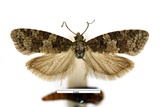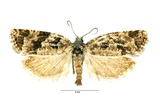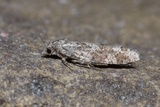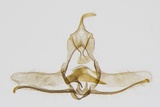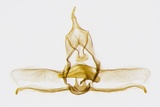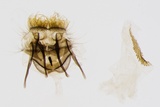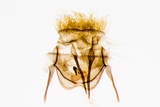Cnephasia asseclana (Denis & Schiffermüller, 1775) Species
Last modified: Jan. 10, 2025, 3:44 p.m.
The status of this species, which is currently rare, is based only on individuals that have been checked for genitalia.
More than likely the species is much more common than we think.
Details
- Classification
- Family: Tortricidae > Subfamily: Tortricinae > Tribus: Cnephasiini > Genus: Cnephasia > Subgenus: Cnephasia > Species: Cnephasia asseclana
- Vernacular names
- Fijne spikkelbladroller (NL), Flax Tortrix (EN), Gemeiner Grauwickler (DE)
- Synonyms
- Cnephasia interjectana (Haworth, 1811) and Cnephasia virgaureana (Treitschke, 1835)
- First mention in Belgium
- De Fré Ch. 1858. Catalogue des Microlépidoptères de la Belgique. — Annales de la Société entomologique belge 2: 45–162. On page 79.
- Status
-
Native
Distribution
Bionomics
The young larva makes a small, full depth mine without a definite shape and little frass. The larva soon leaves the mine and continues feeding among spun leaves. Hibernates as a larva.
The adults come to light.
Flight periods
The moths fly from late April towards mid-August
Observed on
- Substrates:
- Herbaceous plants
The polyphagous larvae live on a large number of plants, mainly herbs but also deciduous trees like Chrysanthemum, Ranunculus, Artemisia, Rumex, Plantago, Centaurea, Humulus, Mentha, Acer, Malus, Salix and many others...
Habitat
It inhabits gardens, parks, farmland, open forest etc...
